Top 10 Most Beautiful Historical Sites in Spain
Sometimes all you need is a relaxing vacation with a few beverages by the pool. However, for many of us, a little exploration and adventure are needed. Come ... read more...home with intriguing stories about Moorish kings and Roman conquests after visiting some historical places in Spain. UNESCO world heritage sites are culturally and environmentally significant locations. Spain today has 45 of these sites, trailing only China with 50 and Italy with 51. But, out of all of these 45 historical sites in Spain, which ones should you visit? We've compiled a list of 10 of Spain's most beautiful historical places below.
-
The first beautiful historical site is the Roman Bridge of Cordoba. It was built by the Romans in the first century BC and, according to Arab geographer Muhammad al-Idrisi in around 1140, "surpasses all other bridges in beauty and solidity."
Rather from being only a work of art, the bridge played an important role in the city of Cordoba's wars with the ominously-named Peter the Cruel and others in the 1350s.
The Cordoba Roman Bridge spans the 657-kilometer Guadalquivir River and was erected in the first century BC. The bridge is 247 meters long and 9 meters wide, with 16 arches supported by irregular semi-cylindrical buttresses.
Location: Córdoba, Spain
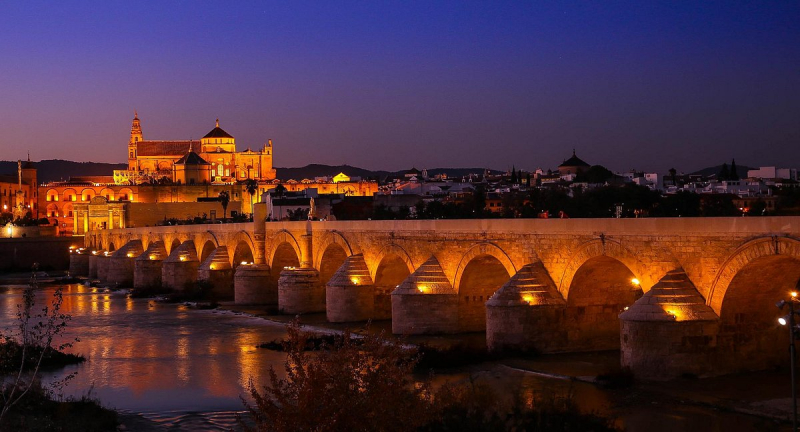
Photo: https://www.tripadvisor.com.vn/ 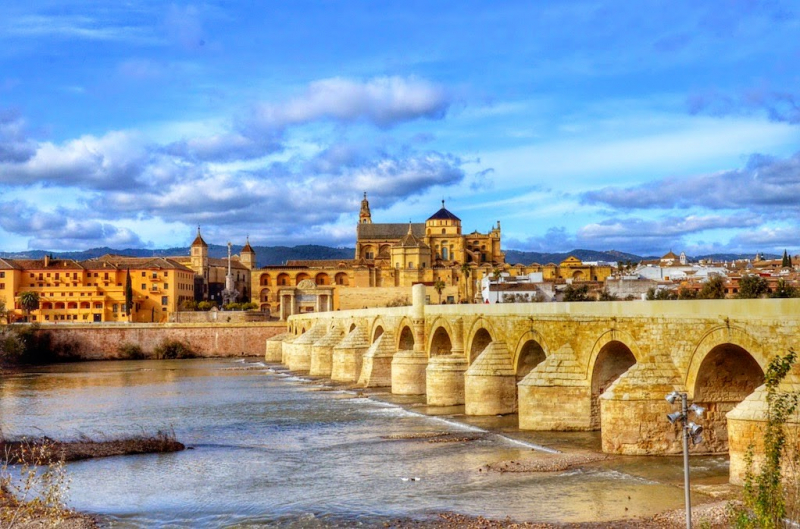
Photo: https://www.theroamingboomers.com/ -
In Granada, the Calat Alhambra, also known as the "Red Fortress," is an extraordinary complex of royal palaces, mosques, baths, shops, and other structures encircled by an imposing two-kilometer fortified wall.
The Alhambra is available to the public today. The Palacio Nazarenes and the 16th century Palace of Charles V, Holy Roman Emperor, are among the palaces that can be seen. The Alcazaba, or "citadel," is another centerpiece of the Alhambra, serving as the principal fortress of the complex.
The Court of the Lions and the Court of Myrtles, the former with a fountain and the latter with a lengthy pool, are the heart of the Alhambra. The Alhambra Museum houses everything from Nasrid art to archaeological artifacts, and its stunning Generalife gardens and buildings are particularly worth seeing.
Location: Granada, Andalusia, Spain
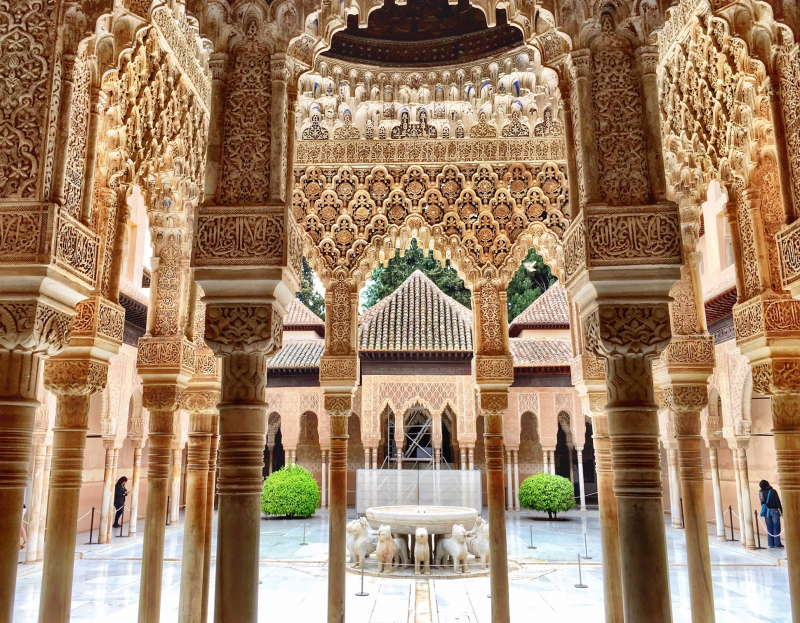
Photo: https://www.classicist.org/ 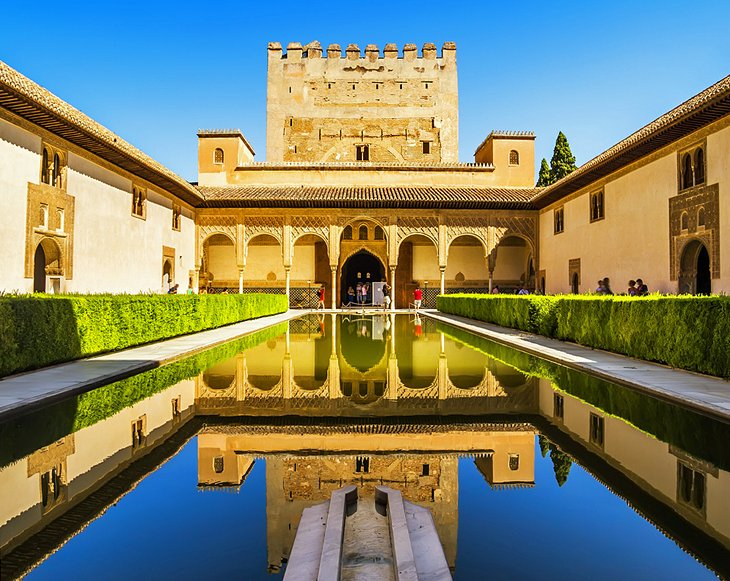
Photo: https://www.planetware.com/ -
Seville Cathedral is the world's third-biggest cathedral, a UNESCO World Heritage Site, and the final resting place of Christopher Columbus, a colonial explorer.
Seville Cathedral is a magnificent gothic construction with a total area of 11,520 square meters, second only to London's St Paul's Cathedral and Rome's St. Peter's in terms of size. When it comes to volume, some even contend that it is the largest.
The cathedral, which was designated a UNESCO World Heritage site in 1987, is an extraordinary historic monument where visitors can experience the tremendous magnitude of the architecture from inside, notably its central nave, which stands at a towering forty meters. The magnitude of Seville Cathedral alone, with its elaborate, gold-laden interiors and eighty chapels, is quite a sight, especially when combined with the richness of architectural influences, spanning from Gothic to Baroque to Mudejar.
The tomb of Christopher Columbus is also a popular tourist attraction, with visitors flocking to see the famed explorer's final resting place.
Location: Sevilla, Spain
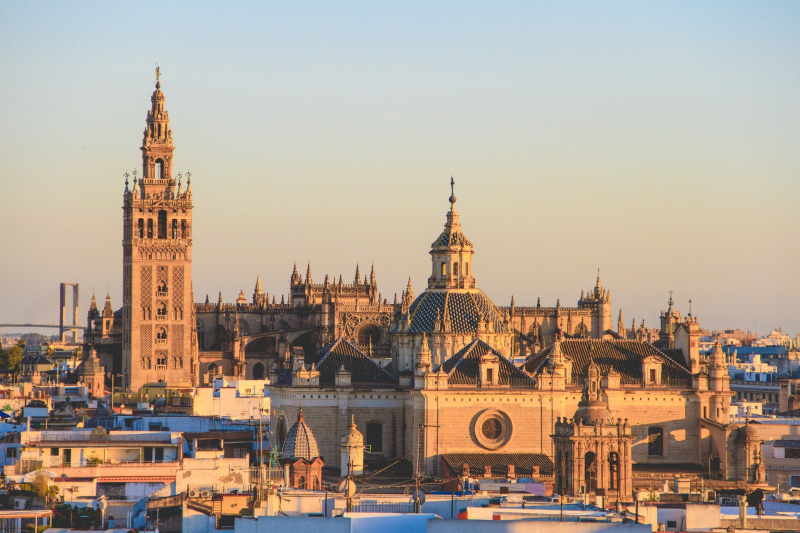
Photo: https://cliomusetours.com/ 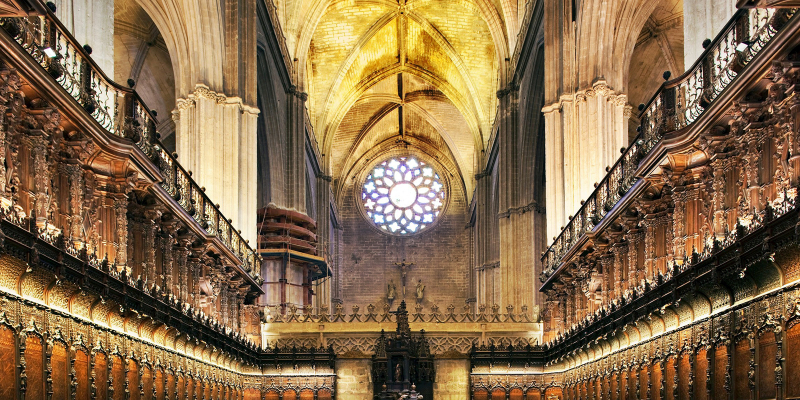
Photo: https://www.afar.com/ -
In Merida, the Santa Eulalia Basilica is an ancient Roman basilica whose ruins lie beneath the current 18th-century church.
Santa Eulalia Basilica was named after a 13-year-old girl who was martyred by being burned at the stake during Emperor Diocletian's Christian persecutions. She is said to be buried nearby, according to mythology.
The crypt of the Santa Eulalia Basilica is particularly remarkable since it contains Roman mausoleums, a tomb sealed with mosaics, and graves from the Visigoth period sealed with marble, which spans 20 centuries of Merida's history.
Location: Mérida, Badajoz, Spain
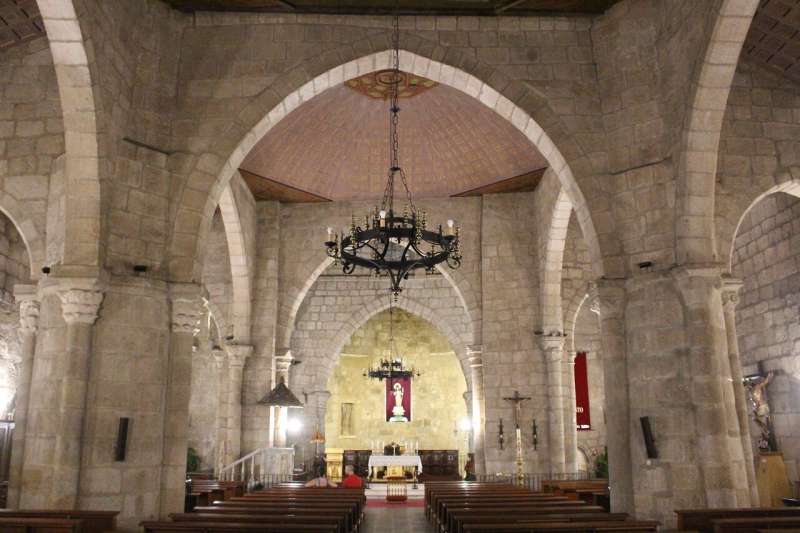
Photo: https://www.tripadvisor.com.vn/ 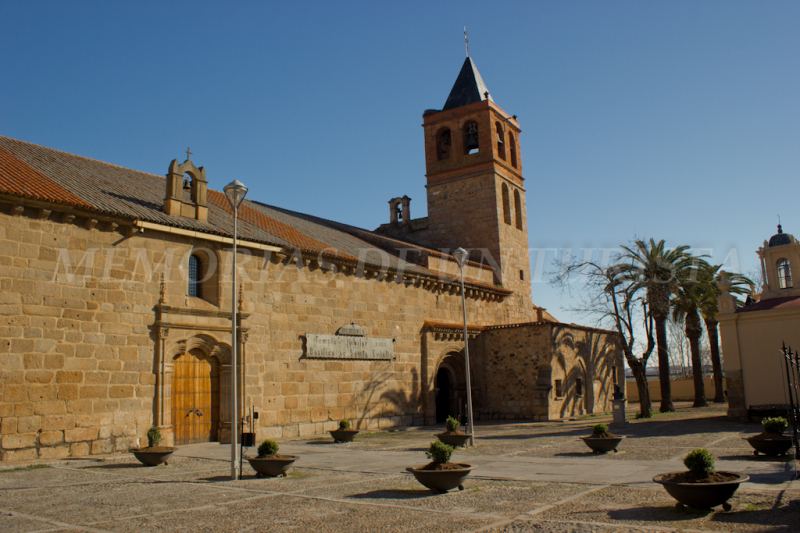
Photo: https://memoriasdeunturista.wordpress.com/ -
El Escorial was built between 1563 and 1567 by Juan Bautista de Toledo, a Spanish architect who had spent much of his career in Rome, to commemorate Spain's victory over the French at the Battle of St Quentin. It would later become the king's palace and the center of his empire.
Look for the beautiful white Carrara marble statues and paintings by El Greco, as well as other 16th, 17th, and 18th century Spanish and Flemish artists, in the basilica.
It's worth acquiring a map and making a list of highlights because there's so much to see in the towering structures that you could easily spend an entire day here.
Location: Madrid, Spain
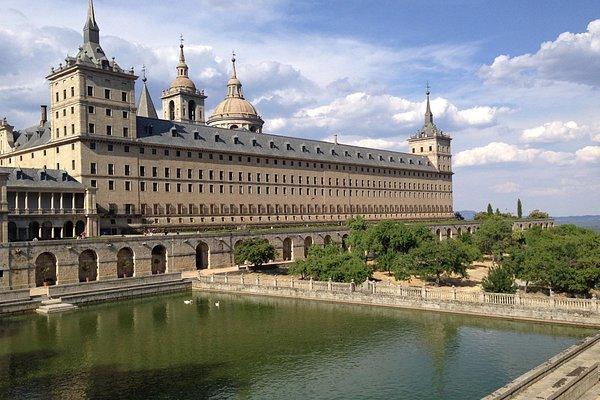
Photo: https://www.tripadvisor.com.vn/ 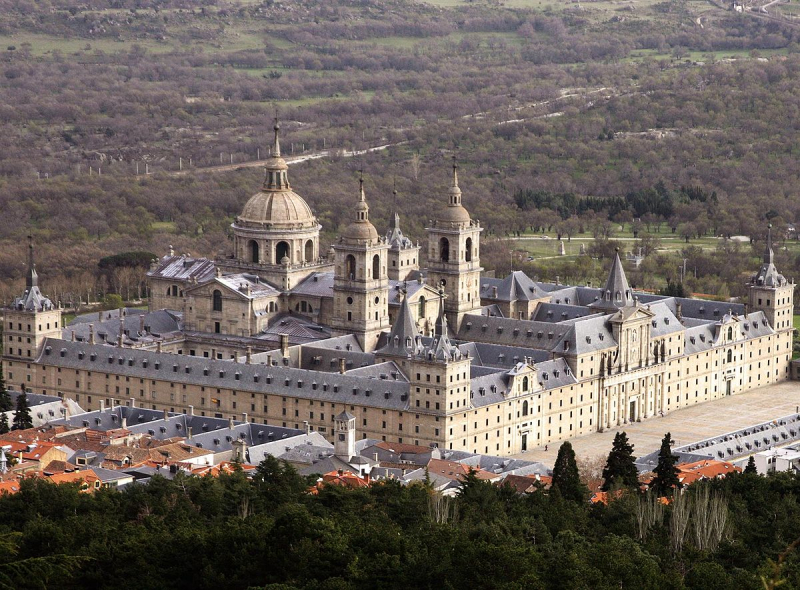
Photo: https://vi.wikipedia.org/ -
The Micalet Tower (El Miguelete) is a famous Gothic bell tower that was built in 1381 and later attached to Valencia Cathedral in the 15th century. El Miguelete translates to 'Little Michael,' and is the name of the city's largest bell, which weighed over 10 tons and was cast in 1532.
In 1381, master builder Andreu Julià of the Valencian Gothic style began work on the bell tower of the Valencian cathedral, El Miguelete. Valencia's Christian identity was reasserted following Muslim domination from the eighth to the mid-thirteenth centuries, thanks to the cathedral's and bell tower's imposing architecture and scale.
El Miguelete, on the other hand, required a long time to build due to its intricate design, which included helical stairs and beautiful moldings.
Location: Valencia, Spain
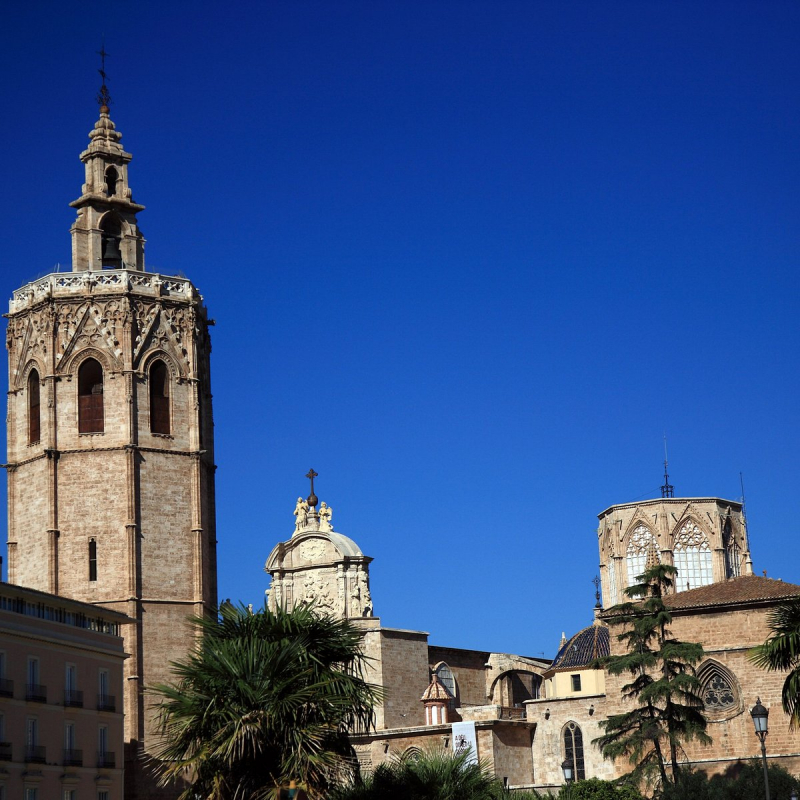
Photo: https://www.tripadvisor.com/ 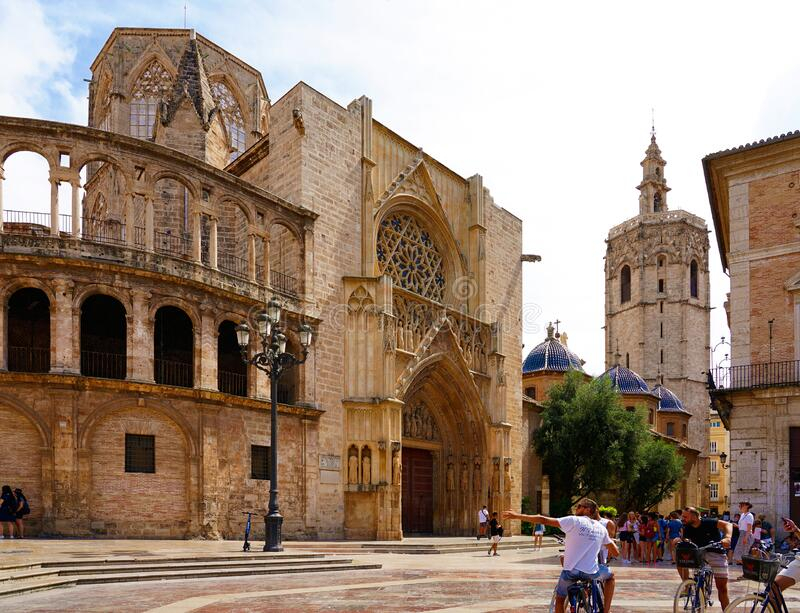
Photo: https://www.dreamstime.com/ -
Known as one of the most beautiful historical sites in Spain, the Toledo Sephardic Museum (Museo Sefardi) is a national museum dedicated to the city's Jewish population's history, culture, and legacy.
The Toledo Sephardic Museum covers the long Jewish history of Spain, from Roman times through the 15th-century Jewish exodus. The Toledo Sephardic Museum is housed in a building that was originally constructed as a synagogue in the 14th century.
Peter of Castile may have authorized the synagogue to be built as a token of his gratitude for Samuel's ha-service Levi as a royal councilor and treasurer. He may have approved the synagogue as a form of restitution for the annihilation of the Jewish population in 1348 during the Black Death's anti-Jewish pogroms.
Location: Toledo, Spain
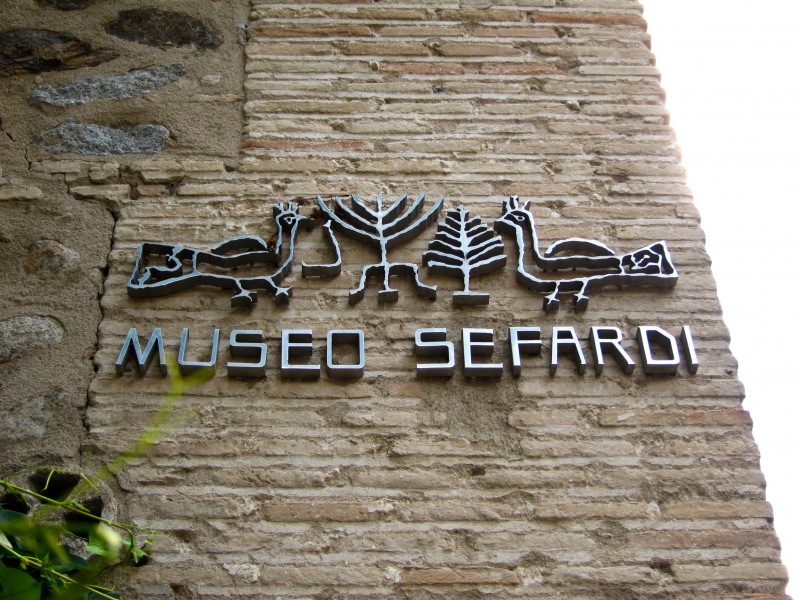
Photo: https://en.wikipedia.org/ 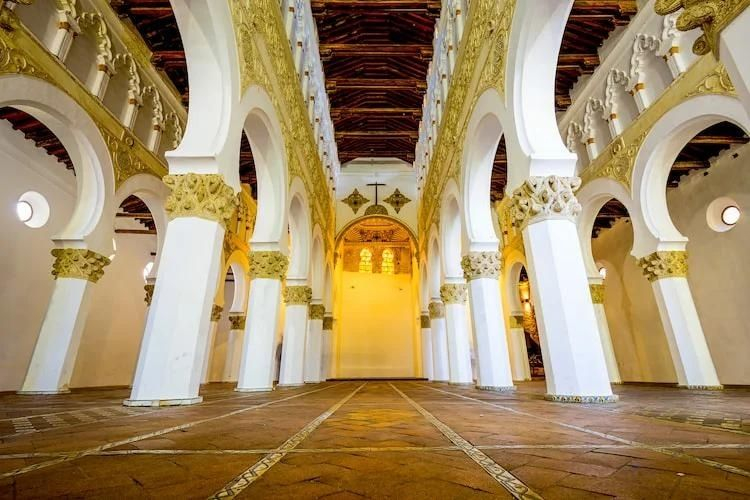
Photo: https://www.historyhit.com/ -
Montserrat Monastery, also known as Santa Maria de Montserrat, is a significant medieval abbey and one of Catalonia's most prominent religious monuments. The monastery, which sits high amid the Catalan countryside's mountains, provides tourists with spectacular views of the surrounding area as well as interesting architecture and history.
Napoleon's forces burned down and looted the monastery in 1811. During the Spanish Civil War, the monastery saw more bloodshed, with many of the priests and religious men and women residing there being slaughtered. While Franco's troops waited to wait for those prohibited down the road, Montserrat Monastery was known as a haven for scholars, politicians, and artists.
Location: Barcelona, Spain
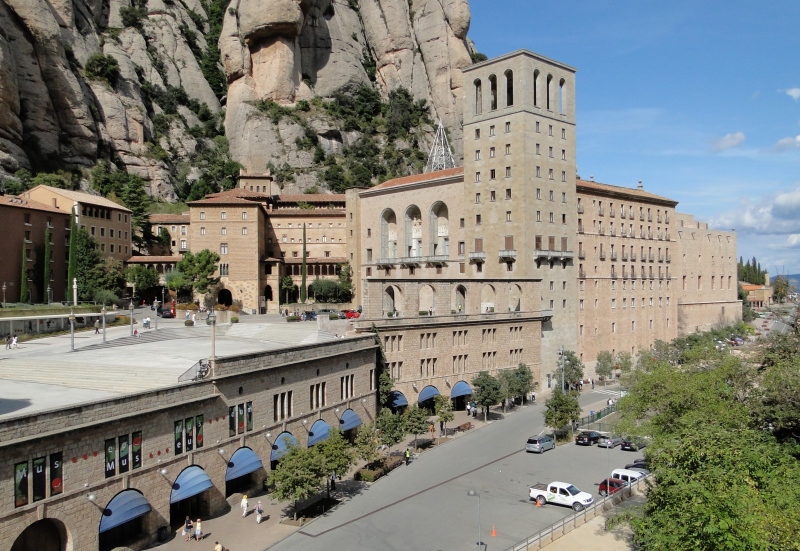
Photo: https://en.wikipedia.org/ 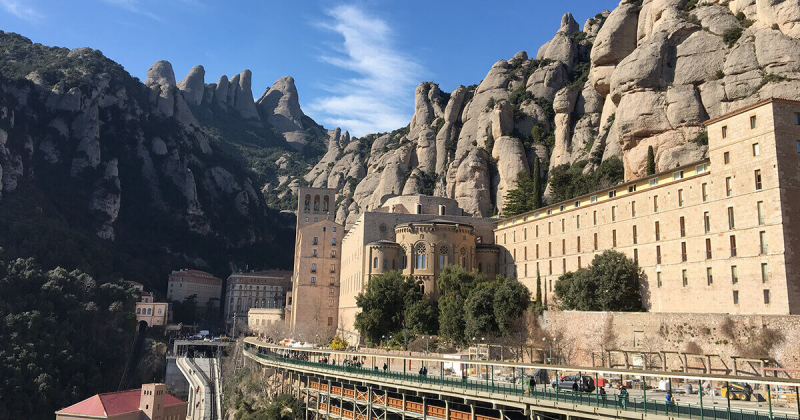
Photo: https://www.uniquetoursbarcelona.com/ -
During the Peninsular War, the British conquered Badajoz Fortress, a bastion built in the 12th century. The Almohads built the castle in the 12th century, while it was most likely present when Badajoz was created in the 9th century. During the Peninsular War, the British attempted three times to seize Badajoz Fortress from the French.
Between March 16 and April 6, 1812, an Anglo-Portuguese force led by Arthur Wellesley, the (future) Duke of Wellington, besieged and eventually breached the high curtain walls of Badajoz Fortress.
Location: Badajoz, Spain
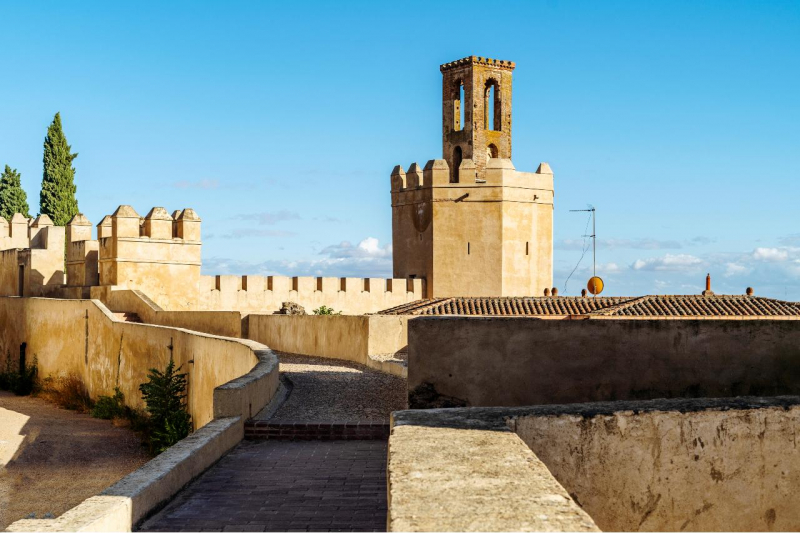
Photo: https://www.historyhit.com/ 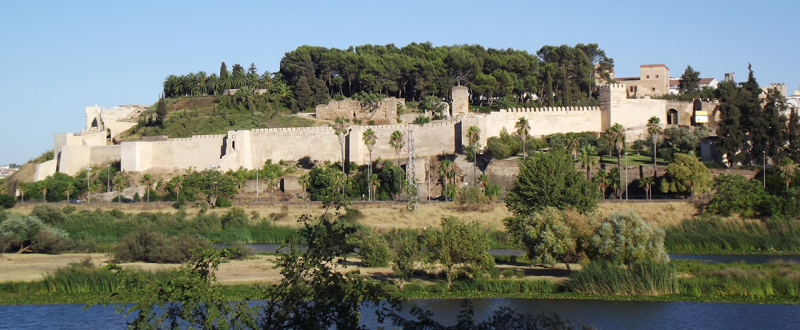
Photo: http://badajozcapitalenlafrontera.com/ -
La Sagrada Familia is the last of the most beautiful historical sites in this list. It is a UNESCO-listed, iconic but unfinished church in Barcelona that is also the final resting place of its architect, Antoni Gaudi.
The construction of La Sagrada Familia began in 1882 under the direction of architect Francisco de Paula del Villar and was later completed by Antoni Gaudi, Barcelona's most famous son. Gaudi worked on La Sagrada Familia for 43 years, seeing it as his holy mission, and putting his own money into the building when monies from the original commission went missing.
Despite its incomplete state, the stunning architecture of La Sagrada Familia attracts crowds of people each year. La Sagrada Familia is an iconic element of Barcelona, with its stunning facades, imposing towers, and underlying symbolism.
Location: Barcelona, Spain
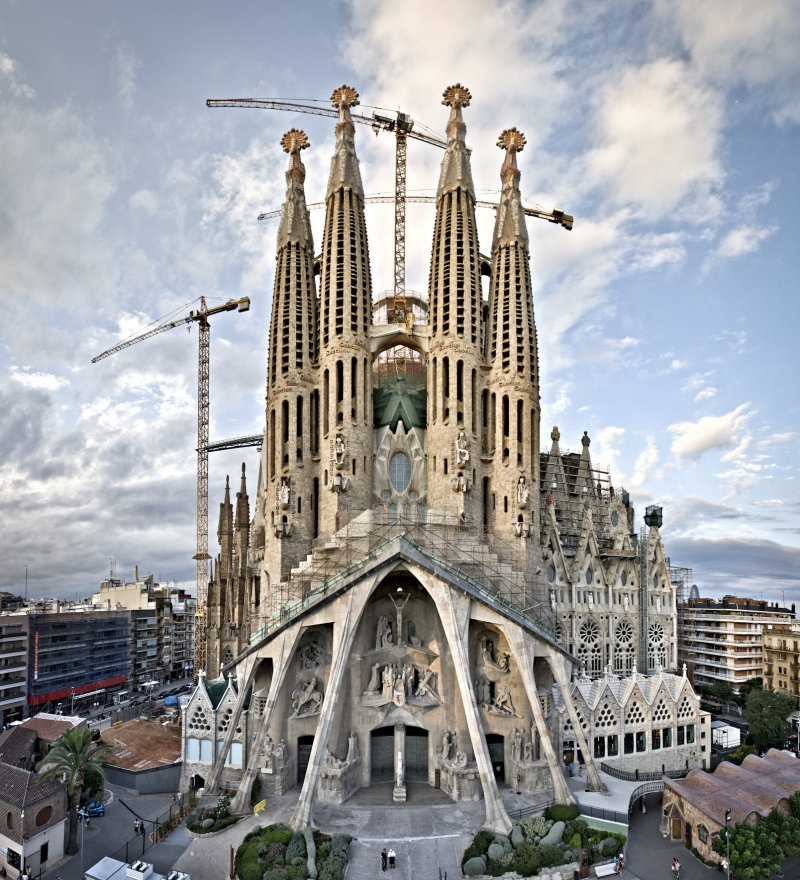
Photo: https://groupc.vn/ 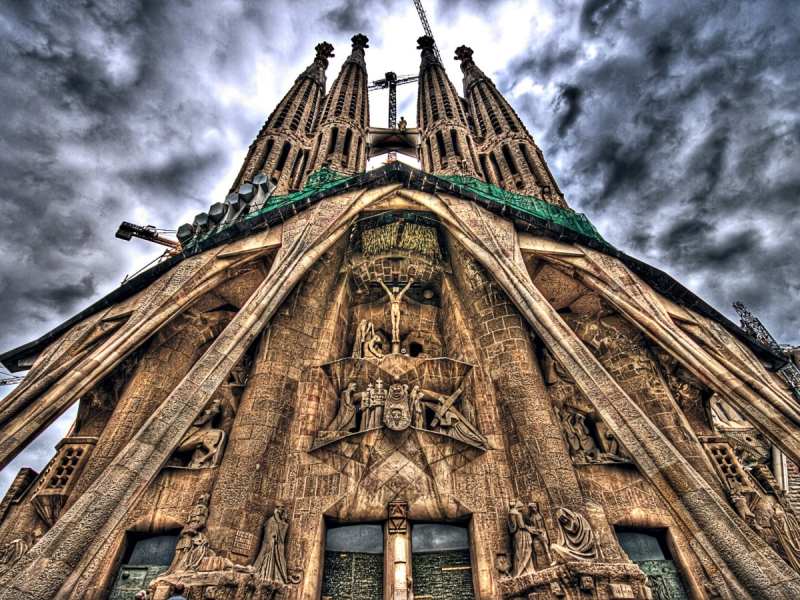
Photo: https://vnexpress.net/































